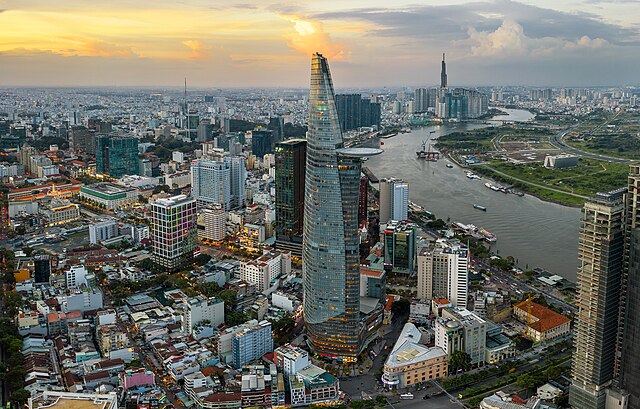The Independence Palace, also publicly known as the Reunification Convention Hall, is a landmark in Ho Chi Minh City, Vietnam. It was designed by architect Ngô Viết Thụ and was the home and workplace of the president of the Republic of Vietnam. It was the site of the Fall of Saigon on 30 April 1975 that ended the Vietnam War, when a North Vietnamese Army tank crashed through its gates.
View of the palace in 2019
Independence Palace in 1967
President's Office in the Hall
The old war room underneath the palace
Ho Chi Minh City, commonly known as Saigon, is the most populous city in Vietnam, with a population of around 9.3 million in 2023. The city's geography is defined by rivers and canals, of which the eponymously-named Saigon River is the largest. As a municipality, Ho Chi Minh City consists of 16 urban districts, five rural districts, and one municipal city (sub-city). As the largest financial centre in Vietnam, Ho Chi Minh City has the highest gross regional domestic product out of all Vietnam provinces and municipalities, contributing around a quarter of the country's total GDP. Ho Chi Minh City's metropolitan area is ASEAN's 6th largest economy, also the biggest outside an ASEAN country capital.
Image: DJI 0550 HDR Pano
Image: Ho Chi Minh City, City Hall, 2020 01 CN 04
Image: Ho Chi Minh City, Saigon, Vietnam (49579093048)
Image: Ho Chi Minh City, Notre Dame Basilica, 2020 01 CN 01








